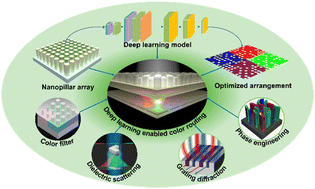Optical color routing enabled by deep learning
Abstract
Nano-color routing has emerged as an immensely popular and widely discussed subject in the realms of light field manipulation, image sensing, and the integration of deep learning. The conventional dye filters employed in commercial applications have long been hampered by several limitations, including subpar signal-to-noise ratio, restricted upper bounds on optical efficiency, and challenges associated with miniaturization. Nonetheless, the advent of bandpass-free color routing has opened up unprecedented avenues for achieving remarkable optical spectral efficiency and operation at sub-wavelength scales within the area of image sensing applications. This has brought about a paradigm shift, fundamentally transforming the field by offering a promising solution to surmount the constraints encountered with traditional dye filters. This review presents a comprehensive exploration of representative deep learning-driven nano-color routing structure designs, encompassing forward simulation algorithms, photonic neural networks, and various global and local topology optimization methods. A thorough comparison is drawn between the exceptional light-splitting capabilities exhibited by these methods and those of traditional design approaches. Additionally, the existing research on color routing is summarized, highlighting a promising direction for forthcoming development, delivering valuable insights to advance the field of color routing and serving as a powerful reference for future endeavors.

- This article is part of the themed collections: Recent Review Articles and Nanoscale 2024 Emerging Investigators


 Please wait while we load your content...
Please wait while we load your content...